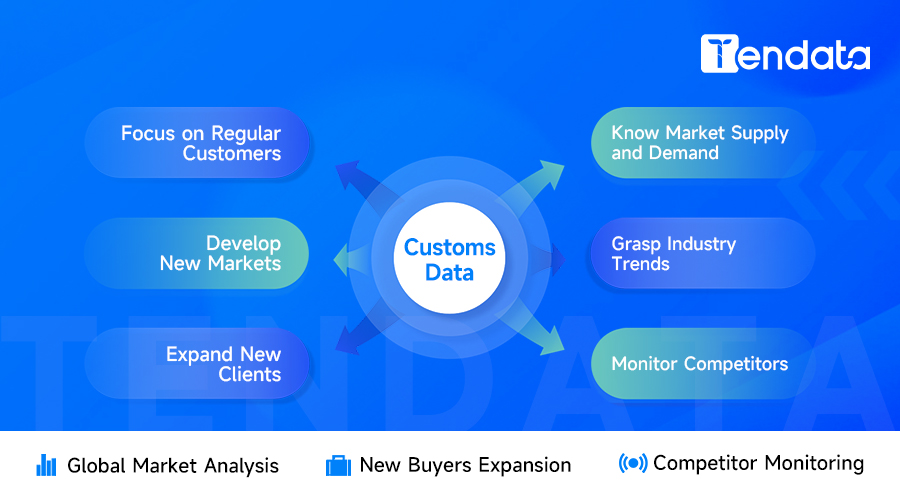 Export News
Export News
 23-02-2024
23-02-2024
Canada is a neighboring country in North America, known for its vast landscapes, diverse wildlife, vibrant city centers like Toronto, Vancouver, and Montreal, and cultural influences from France and England. The iconic maple leaf flag is also a symbol of Canada.

What Are the Featured Export Products of Canada?
One of Canada's largest and most popular export products is maple syrup, with the Canadian maple syrup industry accounting for approximately 78% of the global maple syrup production. The majority of the product comes from Quebec (78%), followed by New Brunswick (5%), Ontario (3%), and Nova Scotia (less than 1%). Maple products constitute 6% of Canada's horticultural product total.
The production of maple syrup is believed to have originated with North American Indigenous peoples, who discovered methods to process maple tree sap into syrup and sugar. The sap is usually collected in spring, and favorable weather conditions allow easy collection by tapping into the tree trunk. European settlers later learned trade skills and modified production methods, leading to large-scale maple syrup production. The syrup is graded and classified based on taste and color, suitable for pairing with porridge, waffles, or drizzling on French toast.
In 2022, Canadian maple producers harvested a record-breaking 104.6 million kilograms (17.4 million gallons) of maple syrup, marking a 53.9% increase from 2021. All maple-producing provinces experienced increased yields, primarily due to favorable weather conditions and ongoing expansion of the maple syrup industry. In 2022, Quebec's total maple syrup production reached 95.8 million kilograms (15.9 million gallons), a 59.1% increase from 2021, setting a historical record for the province as the leading maple syrup producer. In 2023, Canada produced approximately 10.42 million gallons of maple syrup, a decrease from the previous year's 17.4 million gallons.
Exporting maple products holds significant economic and cultural importance for Canada, with the export value steadily rising in recent years. In 2022, Canada's total maple syrup export volume was 69.6 million kilograms (11,583 gallons), a 5.1% decrease from the 73.3 million kilograms exported in 2021. In terms of value, Canada's maple syrup exports amounted to USD 616 million in 2022, a 4.1% increase from 2021. Canadian maple products were exported to 72 different countries in 2022, with the United States accounting for 61.9%, followed by Germany (9.8%), France (5.0%), the United Kingdom (5.0%), Japan (4.6%), and Australia (4.2%), with the remaining 9.6% going to other export destinations.
Where Can You Find Canadian Suppliers?
To find suppliers in Canada, you can take the following approaches:
1. Customs Databases: Use professional customs data platforms such as Tengdao. These platforms typically provide global trade data. In these customs databases, by clicking directly on the Canada section and entering the product name, you can find a list of Canadian suppliers. Ensure you choose a reliable and regularly updated platform.
2. Online Trade Platforms: Search for Canadian suppliers on global trade platforms. Some well-known online trade platforms include Alibaba, Global Sources, Made-in-China, etc. You can find Canadian suppliers in various industries on these platforms and contact them directly.
3. Business directories and Yellow Pages: Use Canadian business directories and online Yellow Pages like Yellow Pages Canada. These resources provide information on businesses in various industries, including contact details and business descriptions of suppliers, enabling you to quickly find Canadian suppliers.
4. Trade Exhibitions and Shows: Attend trade exhibitions and shows held in Canada. This provides an excellent opportunity to interact with Canadian suppliers face-to-face, establish business connections, and learn more about potential suppliers.
5. Industry Associations and Chambers of Commerce: Check Canadian industry associations and chambers of commerce, as these organizations often provide member lists and industry resources. Contact these organizations to inquire about supplying the supplier information you need.
6. Social Media and Professional Networks: Search for Canadian suppliers on social media platforms, especially professional networks like LinkedIn. Many businesses share their business information on these platforms, allowing you to find Canadian suppliers through social media.
7. Government and Trade Agencies: Canadian government and trade agencies typically provide information about businesses in their country. You can visit the Canadian government's business website or trade promotion agencies to access data and resources about Canadian suppliers.
8. Procurement Agents: Consider establishing contact with Canadian procurement or trade agents. These specialized agencies often have extensive business networks and can help you find suitable Canadian suppliers.
By comprehensively using the above methods, you can more thoroughly find Canadian suppliers and select partners that meet your requirements.
"Customs data contains vast information, and extracting relevant customer contact details can be time-consuming, often yielding results that fall short of expectations. Is it really the case? Or is it because customs data is being utilized incorrectly, resulting in wasted effort and time?
Developing customers using customs data involves precisely characterizing all buyers and their procurement systems in the target market. This allows for the quick identification of the most compatible customers, discerning their credit systems and procurement details. It aids in defining high-quality customers and profit margins, enhancing development efficiency, and improving overall effectiveness. When using customs data to develop new customers, consider the following three approaches. (>>>Click to Get Free Access to Customs Data for 90+ Countries)

I. Establish Customer Resource Database by Country
The establishment of a customer resource database is akin to a personalized work record. Start by using trade tracking functionality to compile a list of all customers in a country. Then, analyze each buyer's purchase volume, procurement cycle, product specifications, and supplier system. Pay special attention to the diversification or singularity of a buyer's supply channels, as buyers with diverse supply sources are preferable. Finally, filter out 30% of the potentially high-quality customers from that country and record them in your customer resource database. The database can be flexibly organized by country, time, customer name, follow-up steps, contact phone, email, contact person, etc. (>>>Click to Develop New Customers)
II. Establish Customer Resource Database by Peer Companies
Have a good understanding of the English names (including full names, abbreviations, etc.) of peer companies. Utilize the global supplier networking feature to compile a list of all customers associated with these peer companies. The critical step is to analyze customers from these peer companies based on purchase volume, procurement cycle, product models, etc. Finally, filter out key customers from your identified peers and record them in your customer resource database. (>>>Click to Apply for Free Trial)
III. Identify Newly Appeared Customers in Each Country
Use the trade search function to identify customers newly appeared in a country. Choose the country, set the date range, limit the product name or customs code, and check the "Newest" option. The search results will display high-quality customers that have newly emerged in that country within the specified time frame. Since these customers are new, they may have just started transactions, and the stability of their suppliers may be uncertain. It's essential to focus on following up with these new potential buyers and record them in your customer resource database. (>>>Click to Apply for Free Trial)
These three approaches for developing customers using customs data can be implemented based on the actual needs of the company and oneself. Consider the market environment, industry characteristics, strategic requirements, etc., to find a suitable method. The ultimate goal is to establish and organize a categorized archive of high-quality customers. Once you identify suitable customers, the next step is to precisely contact them through various channels, such as phone calls, emails, and online communication.
Category
Leave Message for Demo Request or Questions


 T-info
T-info T-discovery
T-discovery

 My
Tendata
My
Tendata Market Analysis
Market Analysis Customer
Development
Customer
Development Competitor
Monitoring
Competitor
Monitoring Customer Relationship
Customer Relationship





































































































































